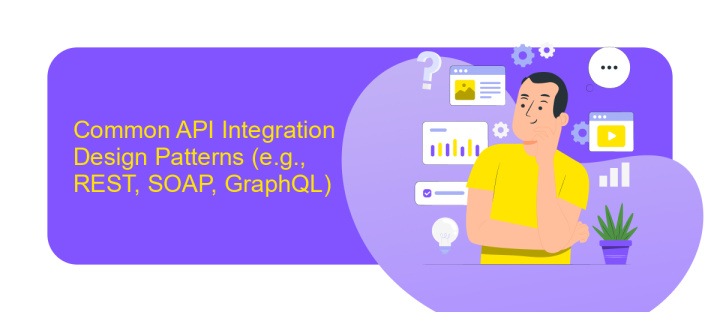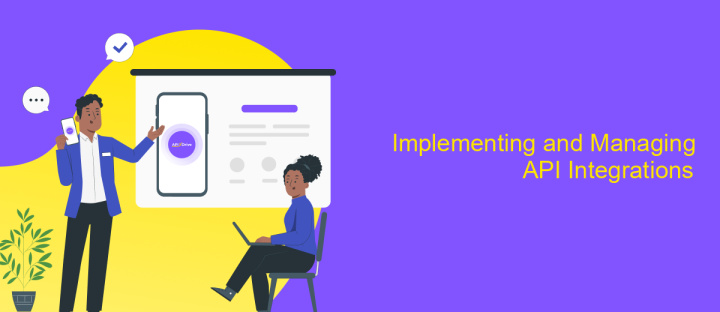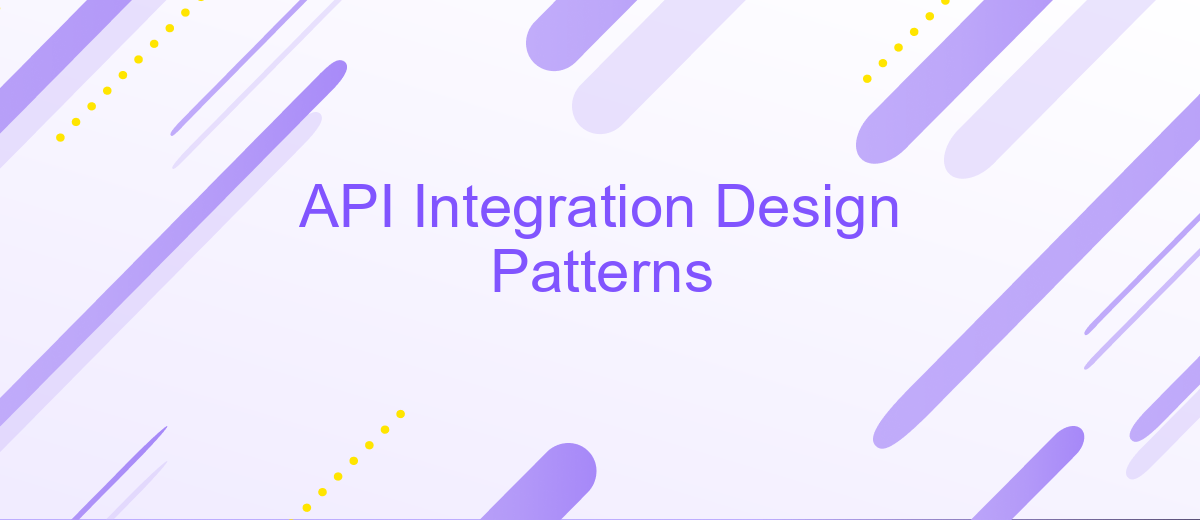API Integration Design Patterns
In today's interconnected digital landscape, effective API integration is crucial for seamless communication between diverse systems and applications. API integration design patterns provide structured approaches to tackle common challenges, ensuring reliability, scalability, and maintainability. This article explores various design patterns that can help developers create robust integrations, streamline workflows, and enhance the overall efficiency of software ecosystems, ultimately driving innovation and competitive advantage in the tech industry.
Introduction to API Integration and Design Patterns
API integration has become a cornerstone of modern software development, enabling disparate systems to communicate and share data seamlessly. By facilitating interactions between applications, APIs allow businesses to enhance functionality, streamline operations, and provide enriched user experiences. As organizations increasingly rely on complex ecosystems of software, effective API integration becomes crucial for maintaining efficiency and agility.
- Standardization: Establishes consistent communication protocols across diverse systems.
- Scalability: Supports growing data volumes and user demands with flexible integration solutions.
- Security: Protects sensitive information through robust authentication and authorization mechanisms.
- Reusability: Encourages code reuse, reducing development time and costs.
- Interoperability: Ensures compatibility between different platforms and technologies.
Design patterns for API integration provide structured approaches to solving common challenges, promoting best practices and efficient development. These patterns guide developers in creating robust, maintainable, and scalable integrations that meet business needs. By leveraging established patterns, teams can avoid common pitfalls, accelerate development cycles, and ensure consistent quality across projects. As the landscape of interconnected software continues to evolve, mastering API integration design patterns remains a vital skill for developers aiming to deliver high-performance, reliable solutions.
Common API Integration Design Patterns (e.g., REST, SOAP, GraphQL)

API integration design patterns are crucial for creating seamless interactions between different software systems. REST (Representational State Transfer) is a widely adopted pattern due to its simplicity and scalability, leveraging HTTP protocols for straightforward communication. It is stateless, meaning each request from a client contains all the information needed to process it, making REST ideal for web services. SOAP (Simple Object Access Protocol), on the other hand, is known for its robustness and security features, using XML-based messaging for secure and reliable transactions, often favored in enterprise environments.
GraphQL, a more recent addition, offers a flexible approach by allowing clients to request only the data they need, reducing over-fetching and under-fetching issues. It provides a single endpoint and uses a type system to define data, enhancing efficiency. To streamline these integrations, services like ApiX-Drive can be invaluable, offering tools to automate and simplify API connections without extensive coding, thereby accelerating the integration process and reducing potential errors. These patterns, each with unique strengths, cater to diverse application needs, ensuring efficient and effective API integrations.
Choosing the Right Design Pattern for Your Needs

When integrating APIs, selecting the appropriate design pattern is crucial for ensuring efficiency, scalability, and maintainability. The right pattern depends on various factors, including the complexity of the integration, performance requirements, and the specific use case. Understanding these elements will guide you in choosing a pattern that aligns with your project's goals and constraints.
- Simple Request-Response: Ideal for straightforward interactions where the client requests data, and the server responds.
- Webhook Pattern: Suitable for real-time updates, allowing the server to push information to the client as events occur.
- Batch Processing: Best for handling large volumes of data where immediate processing isn't necessary.
- Event-Driven Architecture: Perfect for systems that require high decoupling and asynchronous processing.
Each pattern has its strengths and weaknesses. Simple Request-Response is easy to implement but may not scale well for complex interactions. Webhooks offer real-time communication but can be challenging to secure. Batch Processing is efficient for bulk operations but may introduce latency. Event-Driven Architecture supports scalability and flexibility but can increase complexity. Carefully evaluate your project's requirements to choose the most appropriate design pattern.
Implementing and Managing API Integrations

Implementing API integrations requires careful planning and execution to ensure seamless communication between systems. The first step involves understanding the specific needs of the application and selecting the appropriate API design pattern. This decision will influence the overall architecture and functionality of the integration.
Once the design pattern is chosen, developers must focus on establishing secure and efficient connections. Authentication and authorization mechanisms are critical in protecting sensitive data and maintaining system integrity. Additionally, developers should implement robust error handling to manage unexpected issues gracefully.
- Choose the right API design pattern for your application.
- Ensure secure authentication and authorization processes.
- Implement comprehensive error handling strategies.
- Monitor API performance and usage continuously.
Managing API integrations involves continuous monitoring and optimization. Regularly reviewing API performance metrics helps identify bottlenecks or inefficiencies that may affect system performance. By staying proactive in managing these integrations, organizations can ensure their systems remain reliable and scalable, providing a better user experience.
- Automate the work of an online store or landing
- Empower through integration
- Don't spend money on programmers and integrators
- Save time by automating routine tasks
Best Practices and Considerations for API Integration Design
When designing API integrations, it's crucial to prioritize security and scalability. Ensure that data is transmitted securely by implementing robust authentication methods such as OAuth 2.0 and HTTPS. Additionally, consider the scalability of your integration by designing it to handle increased loads and traffic spikes. This can be achieved through rate limiting and employing caching strategies to optimize performance. Thorough documentation is also vital, as it enables developers to understand and utilize the API effectively, reducing the likelihood of integration errors.
Another best practice is to leverage existing tools and services to streamline the integration process. For instance, ApiX-Drive offers a user-friendly platform that facilitates the connection of various applications without requiring extensive coding knowledge. By utilizing such services, businesses can accelerate their integration efforts, reduce development costs, and focus more on core functionalities. Furthermore, always monitor and log API interactions to quickly identify and resolve issues. This proactive approach ensures that integrations remain reliable and maintain a high level of performance over time.
FAQ
What are API integration design patterns?
How do I choose the right API design pattern for my project?
What are some common challenges in API integration?
How can I automate API integrations?
What is the role of middleware in API integration?
Do you want to achieve your goals in business, career and life faster and better? Do it with ApiX-Drive – a tool that will remove a significant part of the routine from workflows and free up additional time to achieve your goals. Test the capabilities of Apix-Drive for free – see for yourself the effectiveness of the tool.


